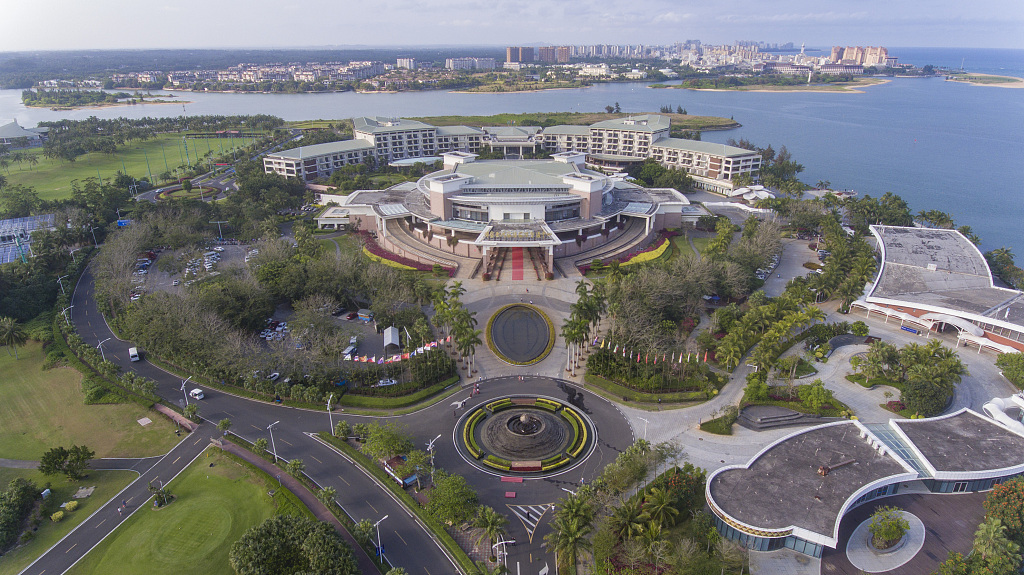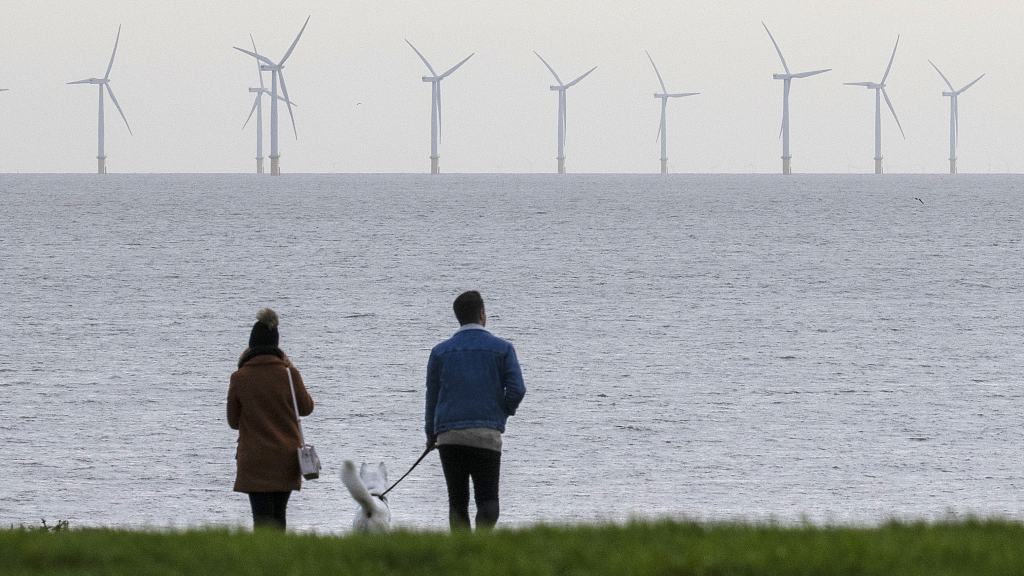
Tourists visit the flower sea in Nanqiang Village, in Boao, south China's Hainan Province, March 17, 2022. /VCG
Tourists visit the flower sea in Nanqiang Village, in Boao, south China's Hainan Province, March 17, 2022. /VCG
Editor's note: Lu Jianfei is a senior consultant at State Grid Energy Research Institute and specializes in energy, SOE reform and corporate governance. She holds a doctorate in management from Renmin University of China. Li Suxiu is a senior consultant at State Grid Energy Research Institute and specializes in energy development strategy, industrial competitiveness and business model innovation. He holds a doctorate in management from Beijing Jiaotong University. The article reflects the authors' opinions and not necessarily the views of CGTN.
This year's Boao Forum for Asia, themed "The World in COVID-19 & Beyond: Working Together for Global Development and Shared Future," will be held from April 20 to 22 in Boao, southern China's Hainan Province. Given that the world economy recovery pace may decelerate due to an energy crisis caused by the Russia-Ukraine conflict this year, green recovery is one of the hot topics that has aroused extensive attention worldwide.
Green recovery is the name given to a series of economic recovery measures aligned with achieving long-term climate change and sustainability objectives, such as facilitating energy transition, reducing carbon emissions, cultivating green industry, boosting technology innovation, etc. As a new economic development pattern, green recovery aims to build a sustainable and economic model for the planet that is both more resilient and inclusive.
Green recovery: A better way to pull global economies out of recession
There are always two options in response to an economic crisis. One is to repeat the past pattern of development, which is an easy way to regain prosperity, but also presents the likelihood of getting stuck in a vicious cycle. The other is to build a new economic system, which may lead to long-lasting prosperity.
Dating back to the international financial crisis in 2008, the global community has attempted to repeat the past development pattern for economy revival. Indeed, some economic recovery plans repeating the extensive growth model with excessive dependence on fossil fuels, such as America's shale-gas revolution and manufacturing renaissance, once shed light on world economy recovery. However, the subsequent growing tensions in the human-nature relationship debilitated the effects of these recovery plans. The outbreak of COVID-19 made it more difficult and tortuous for global economy recovery, which ultimately laid bare the failure of this pattern. The facts prompt governments around the world to reconsider the importance of building a green, low-carbon and circular economic system. Thus, green recovery with a clean energy and sustainable economic growth pattern becomes the undisputed choice to bring economies out of recession.

A couple look out at wind turbines off the coast of Essex in Frinton-on-Sea, England, November 16, 2020. /VCG
A couple look out at wind turbines off the coast of Essex in Frinton-on-Sea, England, November 16, 2020. /VCG
Energy transition: The momentum of green recovery
Green recovery packages are proposed energy, environmental, regulatory and fiscal reforms to recover prosperity. Energy transition featuring decarbonation and digitalization provides momentum for green recovery in two ways.
Energy transition breaks out carbon lock-in to gain sustainable development for green recovery. Carbon lock-in caused by high emissions is one of the biggest challenges for green recovery. As the main source of global carbon emissions, power generation decarbonization is vital to break out carbon lock-in. Based on the International Energy Agency's (IEA) research, energy generation accounted for 43 percent of global carbon emissions in 2020. In China, the total carbon dioxide emissions in 2021 were about 11.9 billion tons, of which the energy sector accounted for about 80 percent, and the power sector accounted for more than 40 percent of the energy sector's carbon emissions. It means that from China to the whole world, the energy industry is the main battlefield to achieve carbon neutrality. Low-carbon and decarbonization should be realized as soon as possible from the aspects of energy structure, energy efficiency and the energy consumption pattern, so as to provide green power for economic recovery.
Energy transition strengthens green recovery by accelerating innovation and fostering industries. The energy transition involves the deployment of renewable energy technologies and energy efficiency. This requires systemic innovation, matching and leveraging synergies in innovations across all sectors, which would cultivate new economic growth points. Furthermore, the industry structure will be shaped by energy transition. With the digitalization and decarbonization in energy, there are plenty of emerging industries such as renewable resource, carbon capture, utilization and storage. These green industries will push global economy recovery into the fast lane in a more sustainable way. It is worth noting that some regions have taken actions on accelerating energy transition to boost green recovery. According to the EU's Recovery and Resilience Facility, 37 percent of the 672.5 billion euros ($727.1 billion) green recovery funds will finance clean technologies such as hydrogen, boost the share of renewables in the energy mix as well as improve energy efficiency. These investments will subsequently stimulate green job creation and sustainable economic growth.
Together towards a greener future
The economic recession caused by the COVID-19 pandemic poses pressing, formidable and long-term challenges to the whole world. As a participant, contributor and trailblazer in global green recovery, China is already taking strong nationwide actions toward carbon peak such as proposing the "1+N" carbon neutrality policy system, controlling coal-fired power generation projects and building national carbon marketing, etc. As we say in China, "When people pull together, nothing is too heavy to be lifted." Facing the severe economic shocks of the COVID-19 pandemic, it is of great importance that the international community step up cooperation and work together on green recovery. Only with more inclusive global governance, more effective multilateral mechanisms and more active regional cooperation can a greener future be reached soon.
(If you want to contribute and have specific expertise, please contact us at opinions@cgtn.com. Follow @thouse_opinions on Twitter to discover the latest commentaries on CGTN Opinion Section.)

